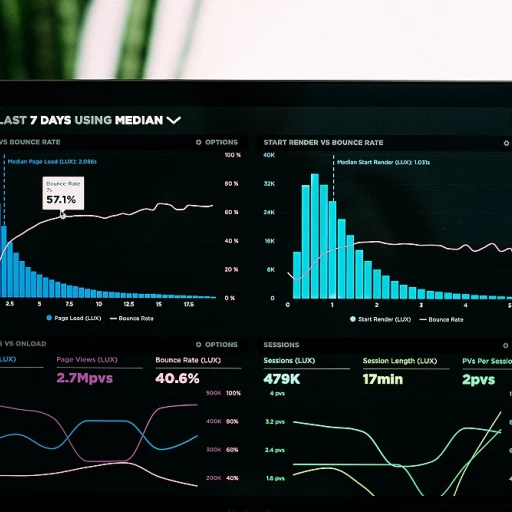
Understanding AI's Role in SEO
AI's Significance in Optimizing Search Engines
Artificial Intelligence (AI) has transformed various industries, and search engine optimization (SEO) is no exception. AI empowers marketers to refine how they interact with their audiences, create tailored content, and enhance user engagement. This transformation is significant for applications like Pardot, which relies on accurate data and effective campaign management. SEO is critical for organizations that want to improve their visibility and reach potential prospects. By leveraging AI, companies can analyze vast amounts of data to unearth patterns and insights that might be missed by traditional methods. AI helps in targeting the right audiences by optimizing keywords and improving campaign relevancy, ultimately driving stronger engagement with prospects and customers. AI-driven SEO can directly influence Pardot campaigns by refining how source campaigns are updated and managed. This integration is crucial for salesforce campaigns, where aligning marketing efforts with sales objectives can enhance account engagement and lead generation. To further enhance your marketing strategies, you might consider exploring effective strategies for crafting engaging tweets and boosting your digital presence. By understanding AI's role, marketers can effectively use it to sync data and engagement activities, achieving a seamless integration between Pardot and other systems, like Salesforce. This synergy allows for efficient management of salesforce pardot campaigns, improving how email addresses and campaign members are tracked and targeted. This not only aids in better prospect management but also ensures a comprehensive view of the entire marketing funnel.The Importance of Source Campaigns in Pardot
The Impact of Source Campaigns on Effective Targeting
In the realm of Salesforce Pardot, source campaigns are pivotal for effective target marketing. The source campaign is essentially the launching pad for all interactions initiated with your prospects. This mechanism allows organizations to monitor and manage how prospects are directed through the marketing funnel, contributing significantly to tailored and effective engagements.
Pardot campaigns are defined from the moment a prospect enters the system, marking the origin of interactions. These campaigns help in tracking the lifecycle of a prospect's journey, offering insights into which initial source campaigns yield the most successful outcomes. The integration of Salesforce campaigns and Pardot campaigns harmonizes data between systems ensuring seamless member sync and engagement history.
In practical terms, identifying the original source campaign is crucial for customizing marketing efforts. This functionality enables enhanced personalization by relying on accurate data collection methods from both Salesforce Pardot and connected campaigns. As you create email marketing strategies, understanding the initial data point—be it a form submission, an email address acquisition, or a lead generation activity—enables informed decision-making for future campaign adjustments.
Moreover, the connected nature of Salesforce campaign data with Pardot's prospect activities ensures complete visibility into how each campaign member interacts over time. By leveraging this integration, teams can identify gaps, optimize the marketing automation process, and enhance campaign member engagement further. This synchronization plays a vital role in refining efforts across multiple platforms, ultimately driving better outcomes.
For a deeper dive into how experimentation and innovation can elevate these strategies, take a look at enhancing marketing strategies with experimentation graphics. This resource provides insights into practical applications of these concepts, further empowering teams to make data-driven decisions.
Integrating AI with Pardot for Enhanced Campaign Management
Leveraging AI for Improved Campaign Management
Incorporating Artificial Intelligence with Pardot can significantly transform how marketers manage their campaigns. At its core, AI helps streamline processes by automating routine tasks in campaign management, thus allowing marketers to focus on strategic decision-making and prospect engagement. Integrating AI in this context enables improved accuracy in predicting prospect behavior, ensuring campaigns are not only effective but also timely. By utilizing AI technologies within the Salesforce ecosystem, professionals can sync data seamlessly across connected campaigns, increasing engagement and optimizing each communication touchpoint. As a result, businesses can better assess the performance of their marketing efforts. AI-driven solutions can accurately identify patterns within the engagement history, offering insights into when and where a prospect is most likely to engage—critical for customizing strategies. One of the primary advantages AI offers in Pardot campaigns involves effectively updating source campaigns. By analyzing patterns, AI assists in identifying the most probable lead sources, streamlining the updating process, and enhancing the quality of member sync. This can help in reducing redundant campaign members effectively, allowing for a more focused and relevant spectrum of campaigns. For marketers aiming to connect campaign management with more strategic goals, the integration of AI and Salesforce Pardot is indispensable. This symbiosis not only ensures that campaigns are in line with the overarching objectives but also ensures that prospects receive the most relevant content at every stage of their journey. This synchronization allows businesses to maintain a competitive edge in marketing automation by optimizing data-backed decision-making. In combining AI with these campaigns, understanding the nuances of the 3-to-11 rule in customer service can yield significant improvements in campaign success rates and account engagement. For instance, AI can be pivotal in ensuring that the critical customer interaction paradigms are respected and utilized to their fullest potential, further making account management more efficient and effective. By employing AI-driven strategies, marketers can not only manage campaign members smartly but also secure their position in an ever-evolving digital landscape. Understanding these nuances is thus essential for those seeking to maximize their campaign's impact.Challenges in AI-Driven SEO for Pardot
Addressing AI Implementations in SEO for Pardot
Integrating artificial intelligence within the realm of SEO, especially in tools like Pardot, poses certain challenges. Pardot campaigns and marketing automation systems have their complexities, and when AI elements are introduced, understanding the nuances becomes crucial.
One of the primary challenges is the synchronization between AI and existing systems. For many businesses using Salesforce campaigns, ensuring that the AI successfully integrates with Pardot campaigns and manages data correctly is a meticulous task. The AI's role is to bridge the gap between source campaigns and prospects' data, potentially increasing engagement and lead conversion. However, achieving this level of connectivity requires seamless member sync throughout Salesforce Pardot.
Data accuracy is another major challenge. With numerous campaign members across different platforms, maintaining consistency and ensuring that the AI processes correct data is paramount. Incorrect data or a mismatch in data can lead to flawed insights and misdirected marketing efforts. Campaigns salesforce systems are data-reliant, so marketers must ensure that the AI maintains data integrity.
Training AI models to understand and process complex marketing campaigns is not a one-time task. Continual learning and updates are necessary, as AI must adapt to evolving marketing trends and changing customer behaviors. This often requires updates to AI algorithms, which might not always be straightforward within the existing Pardot framework.
Furthermore, creating custom source campaigns using AI means that programmatic data handling needs to align with marketing strategies, requiring marketers to constantly oversee AI executions and ensure they resonate with the broader campaign objectives.
Best Practices for Updating Source Campaigns Using AI
Best Strategies for Streamlining Source Campaigns with AI
Optimizing source campaigns using AI within Pardot involves several practices that ensure efficiency and precision in marketing endeavors. As businesses continue to harness AI technology, proactively adopting the right practices can significantly enhance your campaign management. Here’s how:- Utilize AI-Driven Analytics: To effectively engage with prospects in Pardot, employing AI analytics can yield invaluable insights. This helps in understanding engagement history and identifying patterns among prospects. AI facilitates real-time data analysis, enabling marketers to adjust strategies based on actual performance metrics.
- Automate Custom Lead Scoring: Leveraging AI to develop dynamic lead scoring models in Pardot ensures that engagements are accurately quantified. AI algorithms can assess past interactions and assign scores that reflect a prospect's likelihood to convert, seamlessly syncing with Salesforce’s CRM tools.
- Implement Connected Campaigns: By integrating connected campaigns, businesses can keep Pardot and Salesforce in sync. AI plays a crucial role in maintaining a smooth data flow and accurate representation of campaigns, ensuring the marketing cloud and salesforce campaigns remain aligned.
- Employ AI for Targeted Email Campaigns: Customizing email campaigns with AI allows for crafting highly personalized content that resonates with targeted prospects, based on their past behaviors and preferences. This enhances account engagement and drives higher conversion rates.
- Maintain Consistent Data Sync: The successful integration of AI ensures that prospect data, email addresses, and campaign members are continuously updated across platforms. Regularly syncing this information enhances the overall efficacy of Salesforce Pardot.
- Monitor Engagement Insights: Through AI, engage with prospects surely by analyzing past campaign member interactions. Such insights can facilitate the creation of future campaigns that are more aligned with the specific interests and needs of the audience.













